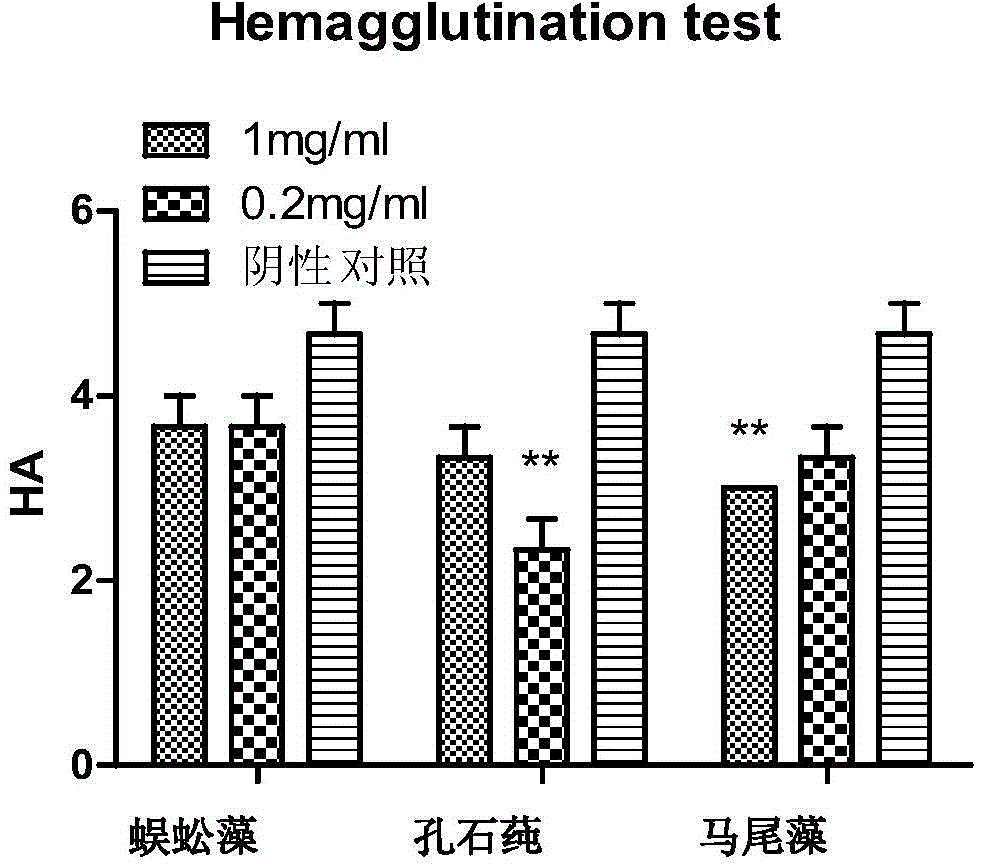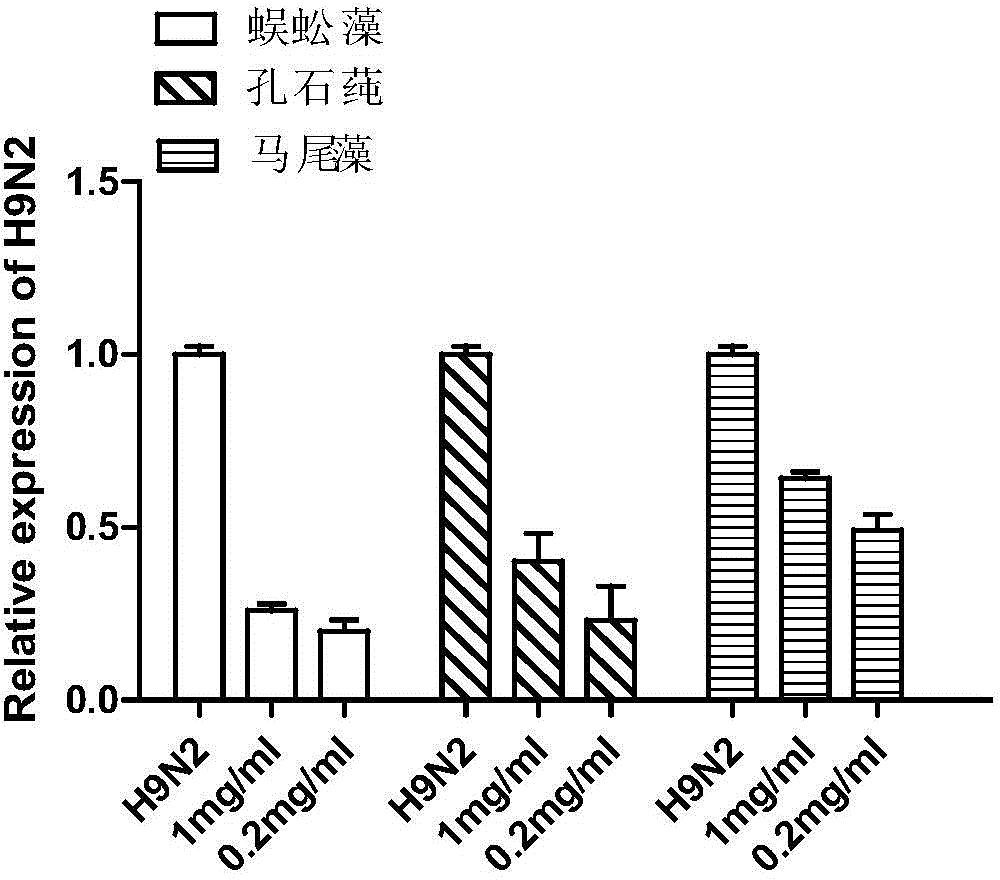Application of seaweed polysaccharides
A technology of seaweed polysaccharide and kelp, which is applied in the field of biomedicine, can solve the problems that have not been reported, and achieve the effects of abundant raw material sources, low production cost, obvious antiviral effect and immune enhancement effect
- Summary
- Abstract
- Description
- Claims
- Application Information
AI Technical Summary
Problems solved by technology
Method used
Image
Examples
Embodiment 1
[0034] Taking centipede algae, Ulva pore and Sargassum as examples to extract seaweed polysaccharides:
[0035] Take 100 g of crushed centipede algae (Grateloupia filicina), add 5000 g of distilled water, and extract in a water bath at 100° C. for 2 hours; use 100 mesh, 200 mesh, and 300 mesh sieves to filter out the filter residue, and then dialyze the filtrate to desalinate and then use reducing Concentrate to 1 / 10 of the original volume by pressing the concentrating equipment, precipitate with 4 times the volume of 95% ethanol for 24 hours, centrifuge, freeze-dry the precipitate, and obtain the centipede algal polysaccharide, which is ready for use.
[0036] Add 40 times of distilled water to the crushed Ulva Pertusa, and extract it in a water bath at 125°C for 4 hours; use 100 mesh, 200 mesh and 300 mesh sieves to filter out the filter residue, and then dialyze the filtrate to desalinate it with reducing Concentrate to 1 / 10 of the original volume by pressing the concentrat...
Embodiment 2
[0042] In vitro antiviral experiment
[0043] 1) Anti-H9N2 avian influenza virus
[0044] Madin-Darby canine kidney (MDCK) cells were grown into a monolayer on a 24-well cell culture plate in DMEM medium containing 10% fetal bovine serum, the culture medium was discarded, washed twice with PBS, and then inoculated with H9N2 virus. After one hour of adsorption, the virus was discarded, washed twice with PBS, and DMEM medium containing 100 ug / ml or 20 ug / ml of seaweed polysaccharide and 1% fetal bovine serum obtained from the above-mentioned embodiments was added, and the negative control group did not add polysaccharide. 37°C, 5% CO 2Incubate in the environment for 24h. The culture medium was taken to measure the hemagglutination titer (Hemagglutination test, HA), the cellular RNA was extracted after washing twice, and the expression level of H9N2 was detected by fluorescent quantitative PCR after reverse transcription. Experiments have shown that after adding the seaweed po...
Embodiment 3
[0052] Embodiment 3 animal immunity and humoral immunity
[0053] Polysaccharides can promote the proliferation and differentiation of B cells, leading to the production of antibodies. On this basis, 80 6-week-old Kunming mice were randomly divided into 8 groups, 10 in each group. The final concentrations of 10mg / kg and 50mg / kg of centipede algae, Ulva pore, Sargassum polysaccharide and H9N2 avian influenza inactivated virus were mixed and immunized twice by intraperitoneal inoculation, and two groups of control groups were set up at the same time. PBS and inactivated virus were injected separately, blood was collected 14 days after the two immunizations, and serum was separated. The effect of seaweed polysaccharides on the immune function of the body was evaluated by measuring the serum AIV specific antibody by enzyme-linked immunosorbent assay. Through this experiment, it can be found that the polysaccharide can significantly stimulate the production of specific antibodies...
PUM
 Login to View More
Login to View More Abstract
Description
Claims
Application Information
 Login to View More
Login to View More - R&D
- Intellectual Property
- Life Sciences
- Materials
- Tech Scout
- Unparalleled Data Quality
- Higher Quality Content
- 60% Fewer Hallucinations
Browse by: Latest US Patents, China's latest patents, Technical Efficacy Thesaurus, Application Domain, Technology Topic, Popular Technical Reports.
© 2025 PatSnap. All rights reserved.Legal|Privacy policy|Modern Slavery Act Transparency Statement|Sitemap|About US| Contact US: help@patsnap.com



